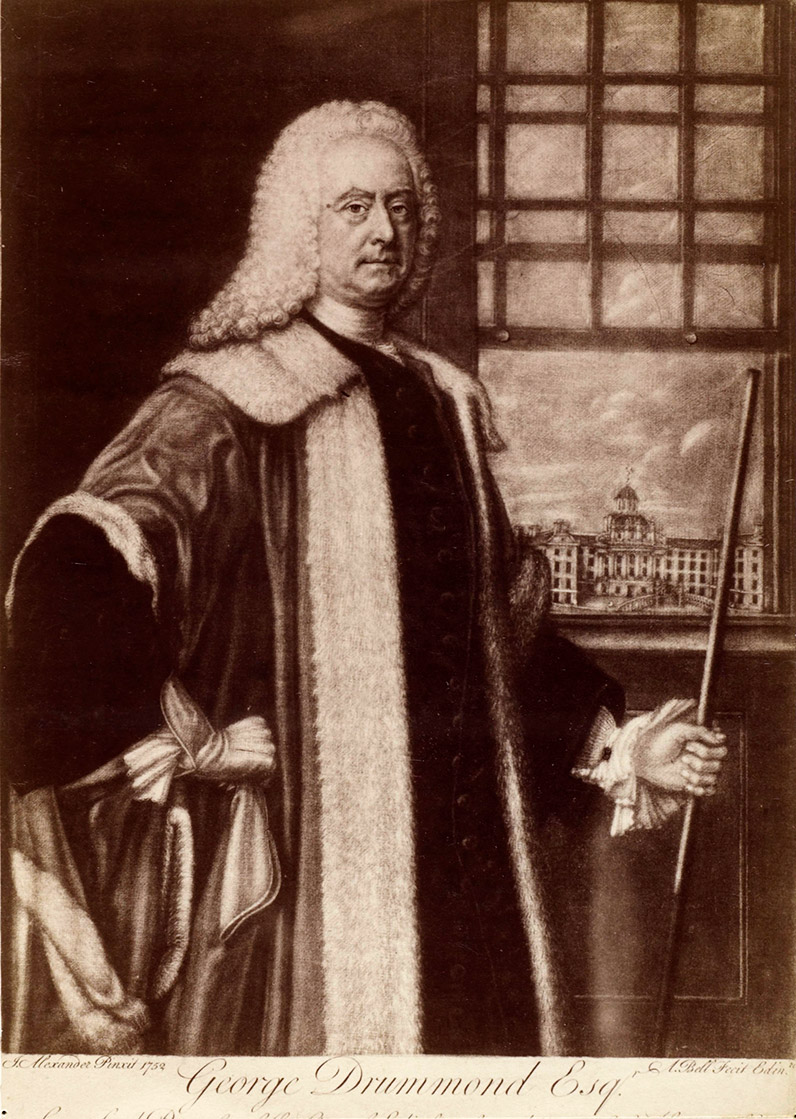Key People
George Drummond (1687-1766)
George Drummond, probably born in Edinburgh, became a member of the town council of Edinburgh in 1716, and was elected Lord Provost six times.
He advocated civic development, and encouraged the establishment of a modern Royal Exchange on the High Street. In 1753, Drummond laid the cornerstone of the building which later became the Edinburgh City Chambers.
He was also behind plans for a bridge linking the area that would become the New Town with the Old Town of Edinburgh. He believed the project would be a stimulus for suburban developments to the north of the city.
Drummond was keen to extend the northern boundaries of the City of Edinburgh. His ‘Proposals for carrying on certain works in the City of Edinburgh’ of 1752 outlined the benefits such an extension would bring to both the city and Scotland.
Image: ‘George Drummond’, by Miss A Bell after J Alexander, 1752. By courtesy of the National Portrait Gallery.
